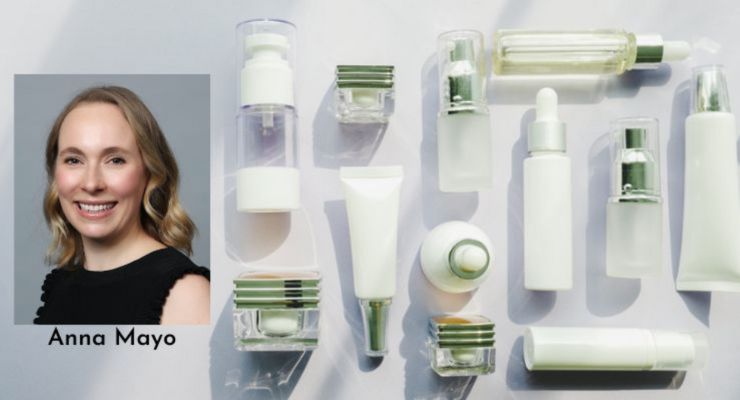Anna Mayo, VP of Beauty & Personal Care Thought Leadership at NIQ02.07.24
In the dynamic landscape of consumer trends and market shifts, 2023 proved to be a rollercoaster year, particularly for the beauty industry. Amidst the challenges of inflation, changing consumer preferences, and the ever-growing influence of social media, the beauty world experienced a profound transformation. This year witnessed a seismic shift in the industry, marked by significant developments that are reshaping the way beauty is perceived and consumed. As we delve into the major trends that unfolded in 2023, it becomes evident that the beauty industry is not merely responding to change but actively steering the course of its evolution.
The clean Beauty movement, while overlapping with sustainability, has environmental implications. Consumers preferring natural alternatives may impact the environment when harvesting at scale. As sustainability becomes a priority, transparent ingredient sourcing and environmental impact assessments are deemed critical. Brands are urged to communicate clear messages about their sustainability efforts to cater to consumers aligning products with their sustainability goals.
The beauty industry in 2023 navigated a tumultuous yet transformative journey amidst the ever-changing landscape of consumer trends and market dynamics. It’s evident that the beauty industry is not merely adapting to change but actively shaping its trajectory. Looking ahead to 2024, the industry stands at a crossroads, where the established trends may either solidify into habits or give way to new and unforeseen developments. The imperative for brands remains to stay attuned to consumer preferences, foster innovation, and communicate transparently about their efforts, ensuring a continued evolution that resonates with the ever-evolving landscape of beauty.
(All data from Nielsen beauty reports)
A Bigger Focus on Wellness
The convergence of beauty and wellness, accelerated by the COVID-19 pandemic, is a significant trend in the beauty industry. Consumers prioritize health, leading beauty brands to adapt to evolving wellness needs. The trend embraces holistic beauty, addressing both internal and external well-being, spotlighting taboo health topics. The combined beauty and wellness market is valued at $140.7 billion, expanding the beauty category by 45%. Adjacent categories like personal health, supplements, functional beverages, and candles align with beauty trends, driven by a demand for clean and health-supporting ingredients. Wellness is evolving into a lifestyle, prompting retailers to dedicate space to wellness-focused products. Beauty brands may need to defend legacy categories or seize opportunities in this growing trend as consumer perspectives on beauty continue to change.TikTok Shop Makes a Scene
TikTok is transforming the retail landscape in the U.S. with the launch of TikTok Shop. This feature allows users to directly purchase products from the app, eliminating the need to be redirected to external sites. The seamless buying process has gained traction, especially in the Beauty and Wellness categories, where 81% of dollar sales on TikTok Shop are attributed. The platform has rapidly climbed to become the 14th largest Beauty and Wellness e-commerce retailer in the U.S. This emerging form of social commerce is becoming a significant disruptor, prompting brands to reconsider their social strategies to leverage this new platform. The impact of TikTok Shop on the U.S. retail landscape is evolving, and staying informed about this innovative shopping experience will be crucial.The Importance of Ingredients
Consumers' increasing vocalization about beauty product ingredients is driving a focus on innovation. The latest exploration of ingredient innovation in beauty and personal care emphasizes the development of new or improved materials to enhance product properties and meet consumer demands for healthier, sustainable, and convenient options. Key themes include clean and sustainable practices, trusted representations, personalization, inclusivity, and ingredient-focused trends. With consumers adopting an 'ingredients first' approach, brands are advised to align choices with trending or desired ingredients, understand future demand, and use marketing claims to highlight desired ingredients. Avoiding certain ingredients supports the clean and sustainable beauty trend, contributing to successful innovation in beauty product formulations.Sustainability Becomes a Habit
In the Beauty & Personal Care industry, there is a shift towards sustainability beyond eliminating perceived harmful ingredients. Consumers now seek products meeting clean Beauty standards while minimizing environmental impact. Sustainable segments like cruelty-free (+18.1%), compostable (+30.9%), and plastic-free (+12.2%) experience substantial dollar growth. Additionally, there's a significant 64% increase in searches for refillable packaging options across categories.The clean Beauty movement, while overlapping with sustainability, has environmental implications. Consumers preferring natural alternatives may impact the environment when harvesting at scale. As sustainability becomes a priority, transparent ingredient sourcing and environmental impact assessments are deemed critical. Brands are urged to communicate clear messages about their sustainability efforts to cater to consumers aligning products with their sustainability goals.
The beauty industry in 2023 navigated a tumultuous yet transformative journey amidst the ever-changing landscape of consumer trends and market dynamics. It’s evident that the beauty industry is not merely adapting to change but actively shaping its trajectory. Looking ahead to 2024, the industry stands at a crossroads, where the established trends may either solidify into habits or give way to new and unforeseen developments. The imperative for brands remains to stay attuned to consumer preferences, foster innovation, and communicate transparently about their efforts, ensuring a continued evolution that resonates with the ever-evolving landscape of beauty.
(All data from Nielsen beauty reports)













